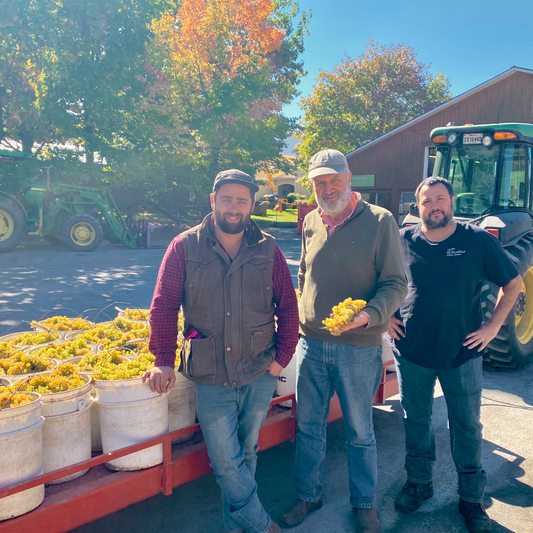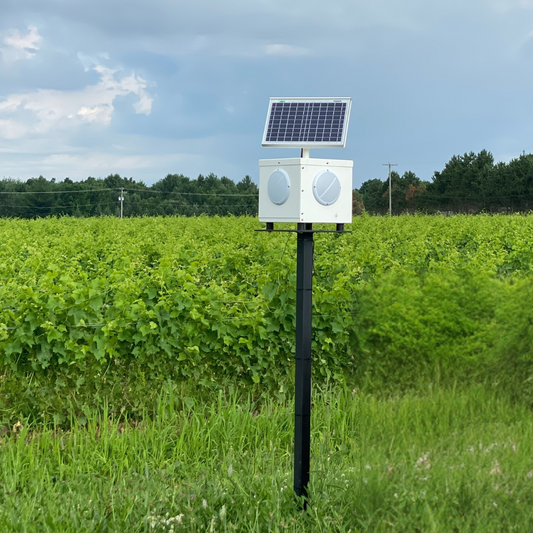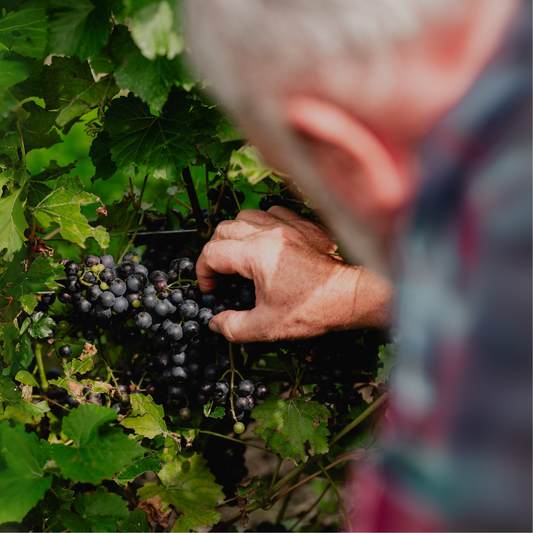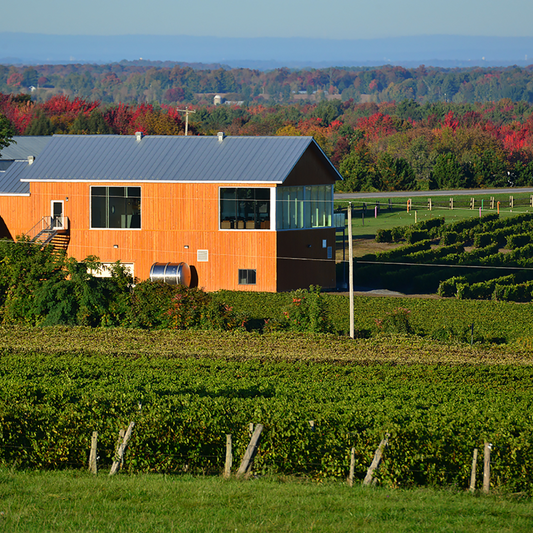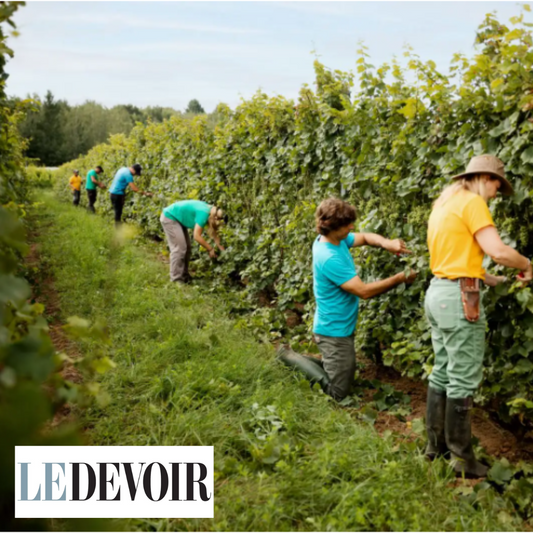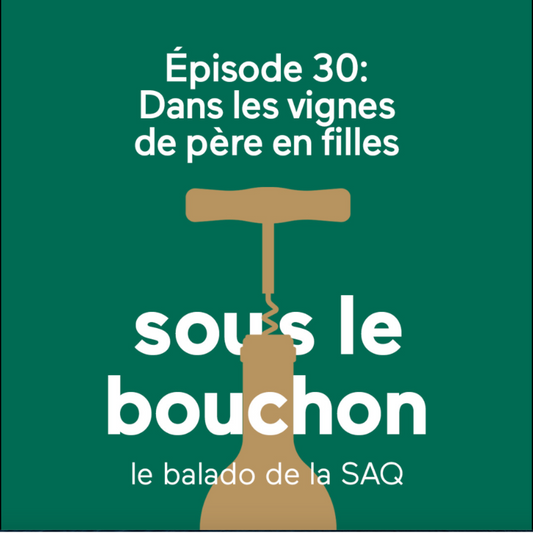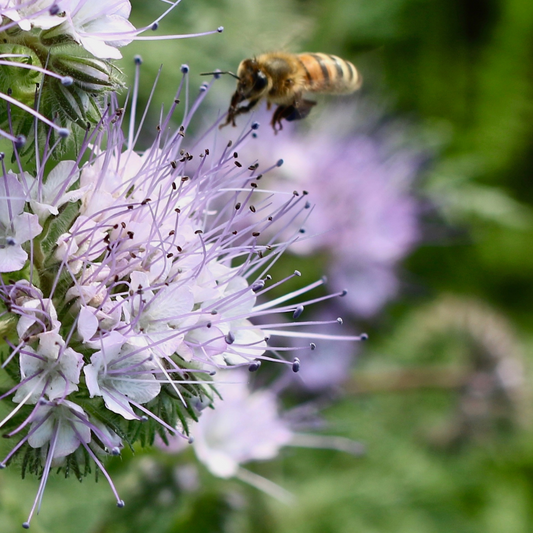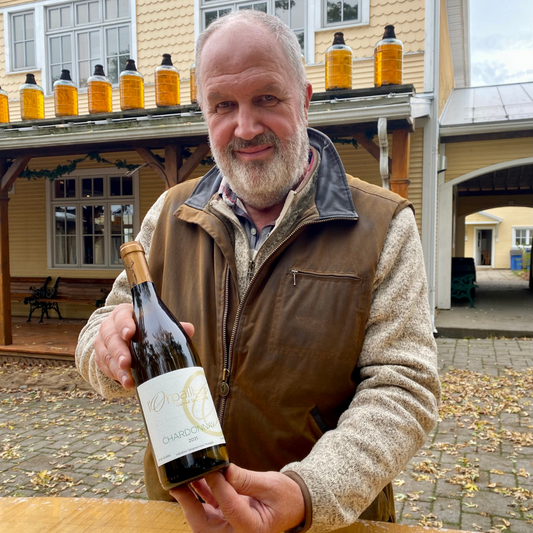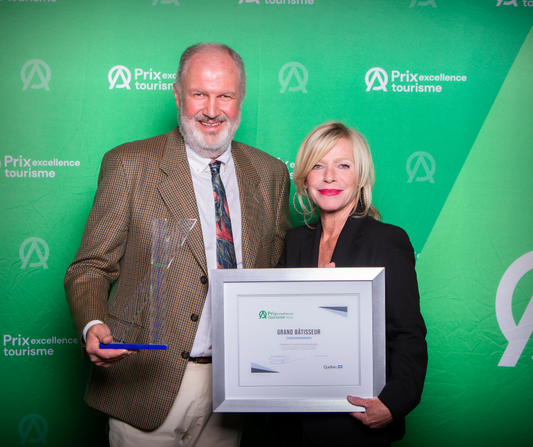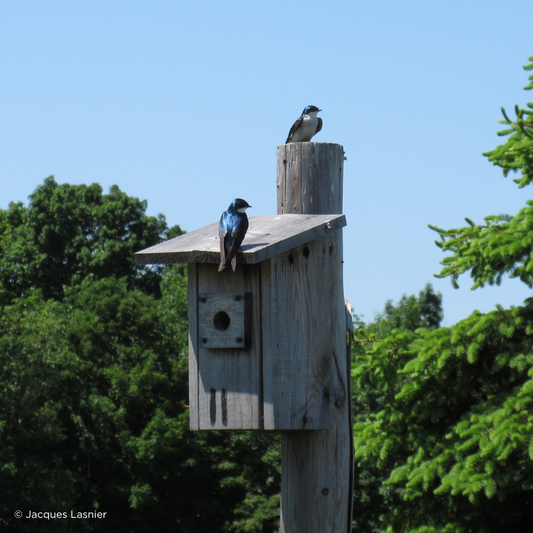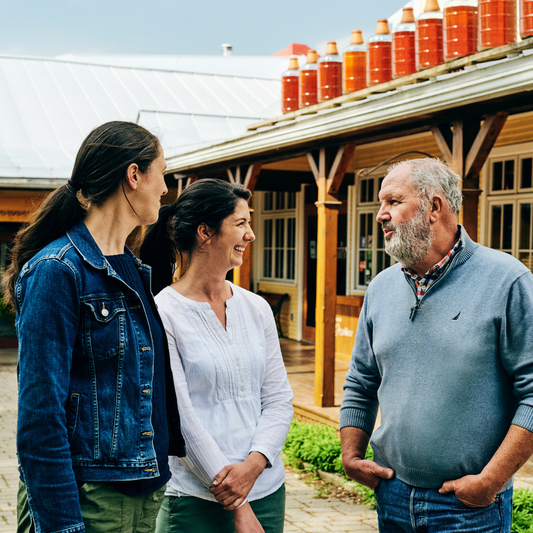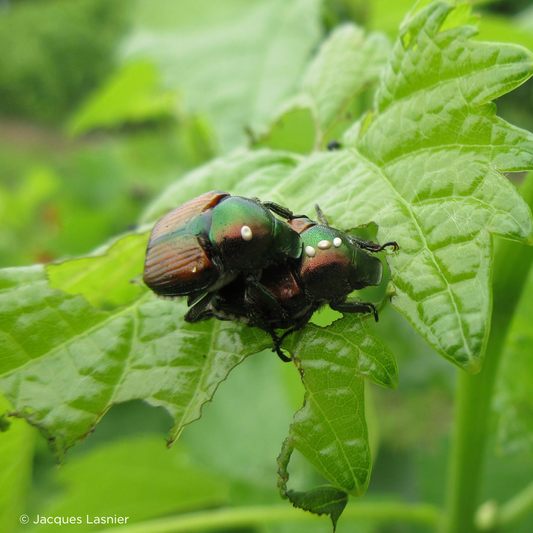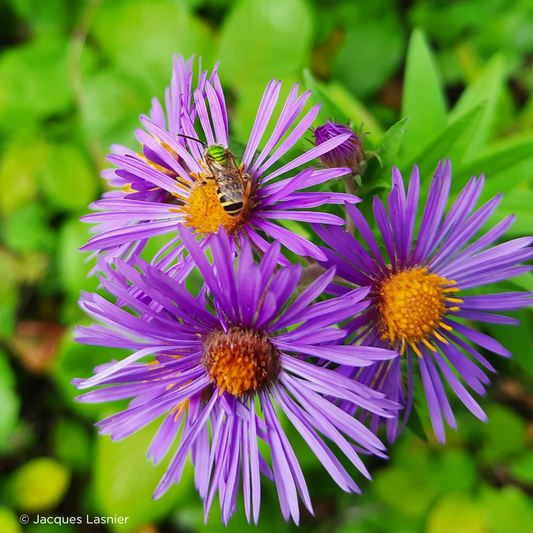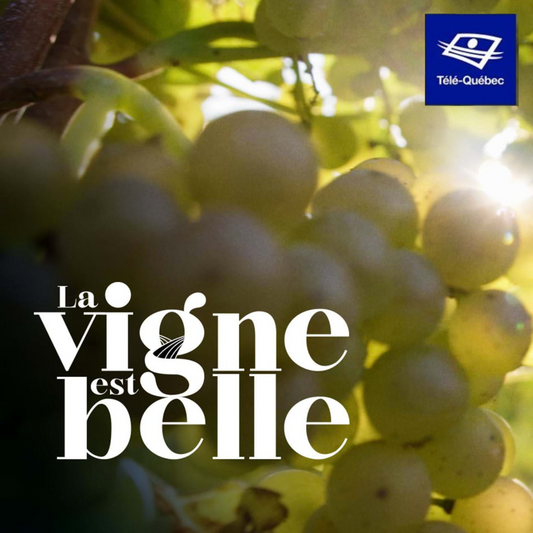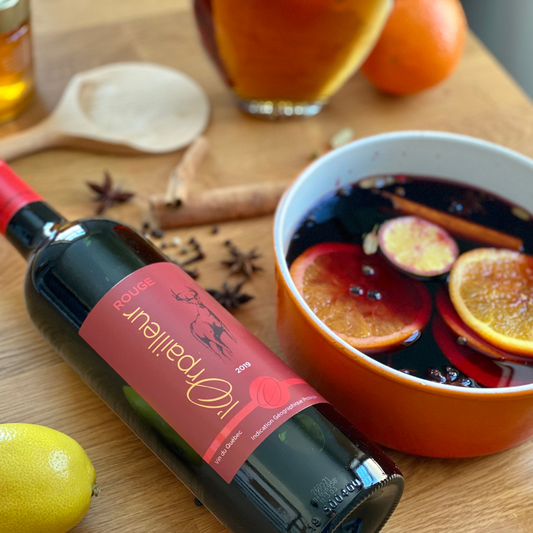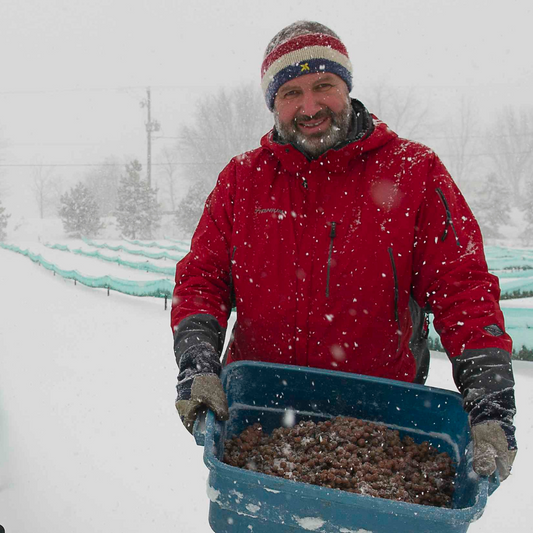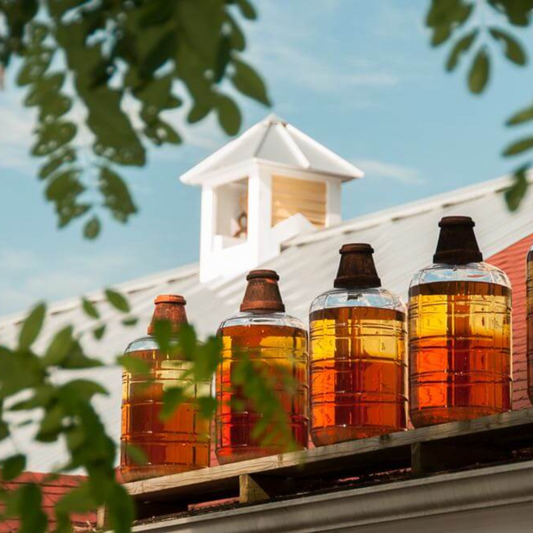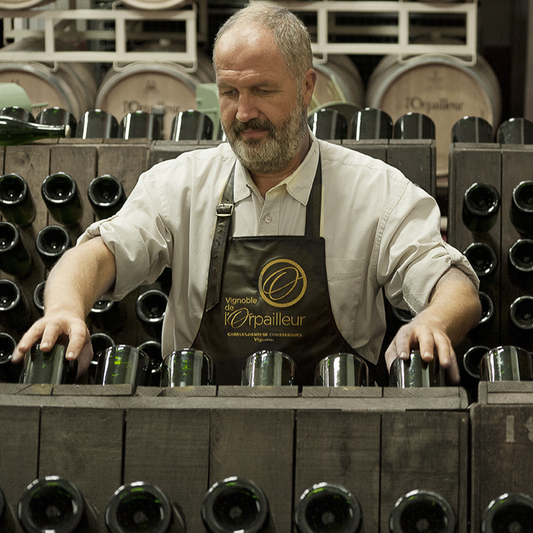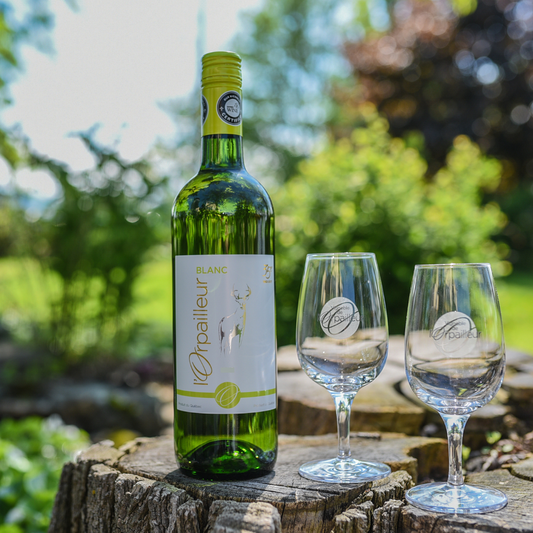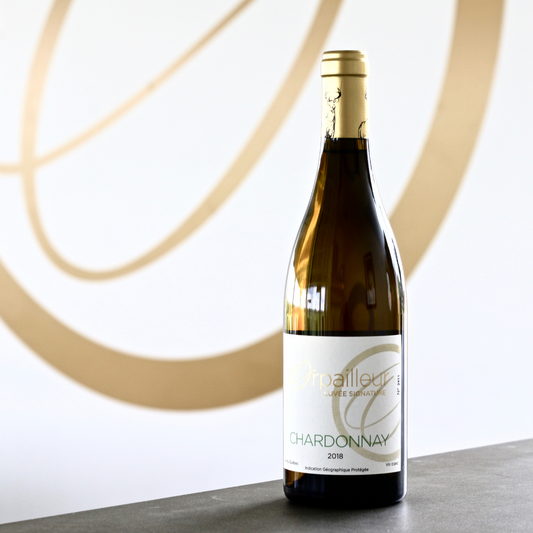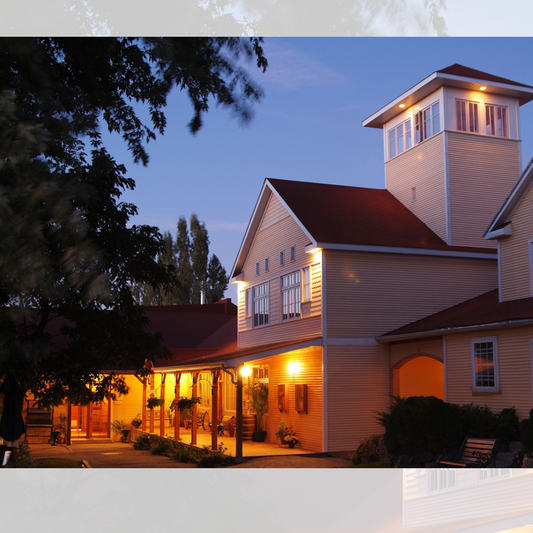In 1982, when Hervé Durand and Charles-Henri de Coussergues planted the first vines, we found ourselves in a very rich environment in terms of biodiversity with a generous population of highly diversified insects. At that time, there were few documents concerning viticulture in Quebec. To tame this environment, our information came from guides in Ontario, New York State and Europe.

Hervé Durand and Charles-Henri de Coussergues who planted the first vines of the Vignoble de l'Orpailleur in 1982.
FIRST RESEARCH PROJECT IN VITICULTURE IN QUEBEC
In 1997, he met the late Victor Dietrich, Jacques Lasnier, Noubar Bostanian and Charles Vincent. Shortly after, the first formal research project in viticulture in Quebec began. This project, in partnership with Agriculture and Agri-Food Canada, Ag-Cord Inc., the Dietrich-Jooss vineyard and the Orpailleur vineyard, concerned the identification and behavior of insects in our vineyards.
QUICK POSITIVE IMPACTS
We quickly benefited from positive spin-offs, so that several research projects followed from 1997 to date, once again with appreciable gains in productivity and environmental sustainability. Thanks to this sustained and long-standing collaboration, we do not apply any insecticide on the grapes thanks to the natural enemy conservation program. For example, keeping the predatory mite Anystis baccarum provides natural suppression of grapevine leafhoppers, pest mites and grapevine moth.

A mite that we call "useful", the predatory Anystis baccarum
RECOGNITION BY RENOWNED RESEARCHERS IN BIOLOGICAL CONTROL
In 2018, our studies on biodiversity and the identification of natural enemies were recognized and cited in a book written by internationally renowned researchers on biological control " Handbook of Pest Management in Organic Farming ".
“(…) Historically, studies in viticulture exclusively target arthropod pests, consequently there is little knowledge of the biodiversity of arthropods in vineyards (…). A notable exception concerns studies, on biodiversity, carried out systematically in Quebec vineyards where a high biodiversity of arthropods has been inventoried. These studies demonstrate the abundance of natural enemies in these agrosystems and their potential for biological pest control (Bostanian et al., 2012). Such information should prove its usefulness for the development of management strategies for arthropod pests in vineyards using few insecticides such as vineyards in biological or biodynamic control. » (1)
The studies
1997-2007 | "STUDY OF THE INVENTORY AND DYNAMICS OF PESTS OF VINE IN SOUTHWESTERN QUEBEC."
In order to build a pest control program based on good integrated pest management practices adapted to the climatic conditions of Quebec, this study was undertaken to determine the presence and abundance of arthropod pests and their natural enemies in two vineyards. business in southern Quebec.
Collaborators: Noubar Bostanian, Charles Vincent Horticultural Research and Development Center Agriculture and Agri-Food Canada, Jacques Lasnier Ag-Cord inc. (Co-Lab R&D), the Vignoble de l'Orpailleur and the Vignoble Dietrich-Jooss.
- 1997–2000, PHASE 1: Inventory and identify the arthropods present in the ecosystem of the two vineyards.
- 2001–2004, PHASE 2: Continuation of the study “Inventory and identify the arthropods present in the ecosystem of the two vineyards”. Five entomologists identified the inventoried fauna.
- 2005–2007, PHASE 3: Study of the impact of insect pests. Study of the population dynamics of beneficial insects and mites (natural enemies).
Consult the list of scientific advancements made during the study.

A tarnished plant bug nymph. The adult lays its eggs on a flower stalk. Then the eggs hatch and the nymphs feed on the flower buds after fruit set causing the grapes to drop.
-
2001-2007 | "STUDY OF THE INVENTORY AND DYNAMICS OF VINE DISEASES IN SOUTH-WESTERN QUEBEC."
The two phases of these projects aimed to identify the main fungal diseases that ravage vines under the prevailing climatic conditions in Quebec.
Collaborators: Odile Carisse Agriculture and Agri-Food Canada, Jacques Lasnier Ag-Cord inc. (Co-Lab R&D), Vignoble de l'Orpailleur and Vignoble Dietrich-Jooss.
- 2001-2004, PHASE 1: Inventory and identify fungal diseases affecting grapevines in southwestern Quebec.
- 2005-2007, PHASE 2: Studies of the dynamics of spore ejection and their spatial distribution of fungi that ravage vines; Erysiphe necator , Plasmopara viticola .
This study contributed to the creation of two guides:
- Identification guide of the main vine diseases
- Reasoned management of the main vine diseases in Quebec


A spore catcher in our vines and grapes severely damaged by the white of the vine.
-
2008-2010 | "STUDY OF THE DYNAMICS OF SYMPTOMATIC DISEASE CAUSED BY BOTRYTIS CINEREA (GRAY MOT) OF GRAPEVINES IN SOUTHWESTERN QUEBEC."
This study allowed us to better understand the dynamics of Botrytis cinerea . This has provided us with a very important technological advancement for the development of an effective and environmentally friendly strategy for the suppression of gray rot symptoms in grapevine.
Collaborators: Jacques Lasnier Ag-Cord inc. (Co-Lab R&D), Orpailleur vineyard.

Grapes affected by gray rot.
-
2007-2010 | "IDENTIFY THE SYMPTOMS AND INVENTORY OF VINE YELLOW DISEASES AND THE POTENTIAL RISKS OF ITS DEVELOPMENT ON 7 WINE VARIETIES IN SOUTHWESTERN QUEBEC."
2013-2015 | "STUDY OF THE PREVALENCE AND DIVERSITY OF PHYTOPLASMS AND POSSIBLE TRANSMISSION BY LEAFhopperS."
The first study aimed to identify and understand the biological cycle of vine phytoplasmas and the development of diseases caused by these phytoplasmas on vines. The second studied its extent in the vineyards of Quebec and the identification of insect vectors of phytoplasma diseases.
Collaborators: Christelle Olivier, Charles Vincent and Julien Saguez Agriculture and Agri-Food Canada, Jacques Lasnier Ag-Cord inc. (Co-Lab R&D), Vignoble de l'Orpailleur, University of Picardie Jules Vernes Amiens in France.
Consult the list of scientific and technological advancements made during the study.


A leafhopper, a biting insect that empties the plant cells of the leaf which reduces photosynthesis which is essential for the ripening of the grape.
-
2010-2012 | "STUDY OF THE DYNAMICS OF THE PREDATORY MITE ANYSTIS BACCARUM AND ITS IMPACT ON THE POPULATIONS OF VINE PESTS IN SOUTHWESTERN QUEBEC."
To study the biological cycle of predatory mites Anystis baccarum in order to protect and increase their population throughout the vineyard and to develop the concept of increase-conservation . This allowed these natural enemies to provide biological control of leafhoppers, pest mites and grape berry moth.
Collaborators: Jacques Lasnier Ag-Cord inc. (Co-Lab R&D), Orpailleur vineyard.

Mite Allothrombium sp., a mite that is visible to the naked eye. It is a generalist predator that feeds on insect eggs and nymphs.
-
Studies on invasive alien insects
2013-2016 | "STUDY OF THE BIODYNAMICS OF DROSOPHILA SUZUKII POPULATIONS."
We have identified for the first time in the vineyards of Quebec , the presence of this Drosophila which is an invasive exotic insect native to Asia. We studied the dynamics of their population in vineyards and the risk of fruit damage.
Collaborators: Charles Vincent and Julien Saguez Agriculture and Agri-Food Canada, Jacques Lasnier Ag-Cord inc. (Co-Lab R&D), Orpailleur vineyard.
Consult the list of scientific advancements made during the study.

A trap, in the vines, which contains an apple vinegar solution to attract and inventory fruit flies during the study.
-
2017-2021 | STUDY OF THE DYNAMICS OF THE FLY TACHINIDAE ISTOCHETA ALDRICHII PARASITE OF THE JAPANESE BEETLE. PHASE 1"
To study the biological cycle, the dynamics and the development of the populations of this Tachinidae fly which ensures the natural repression of the Japanese beetle by its parasitism. The Japanese beetle being an invasive exotic insect native to Asia.
Collaborators: Charles Vincent Agriculture and Agri-Food Canada, Jacques Lasnier Ag-Cord inc. (Co-Lab R&D), Orpailleur vineyard.
For more information, see the blog post: Finally a natural predator against the Japanese beetle!

Two Japanese beetles parasitized by the Tachinidae fly.
Several studies are currently underway. Follow us to stay up to date!
|
THE FRUITS OF OUR 25 YEARS OF RESEARCH AND DEVELOPMENT WITH AG-CORD AND CHARLES VINCENT. Ag-cord inc. is an independent research institute incorporated since 1996. Jacques Lasnier is the sole shareholder – founder. Co-Lab R&D is the division of Ag-cord inc. which generates scientific research and experimental development. Their expertise is the development of alternative methods to the use of pesticides. The use of natural enemies, the development of biological control agents and the integrated control of crop enemies are their main fields of study. Charles Vincent worked from 1983 to August 2021 as a researcher in agricultural entomology for Agriculture and Agri-Food Canada's Horticultural Research and Development Center in Saint-Jean-sur-Richelieu, Qc. In this capacity, he collaborated for 25 years with Orpailleur and Co-Lab R&D. He is currently a scientific consultant, particularly in the writing of popular texts on agriculture, and in the production of podcasts related to agriculture and the environment.
|
Footnote
(1) Vacante V. Kreiter S.. 2018. Handbook of Pest Management in Organic Farming. Chap. 7. Pest Management in Organic Grape Production. 177-217.
Useful links
Sustainable Arthropod Management in Quebec Vineyards , Charles Vincent and Jacques Lasnier, MDPI, Journals Agriculture Volume 10 Issue 4.
Biodiversity in a Cool-Climate Vineyard: A Case Study from Quebec , Charles Vincent, Jacques Lasnier, Charles-Henri de Coussergues and Alain Baril, MDPI, Journals Insects Volume 12 Issue 8.





